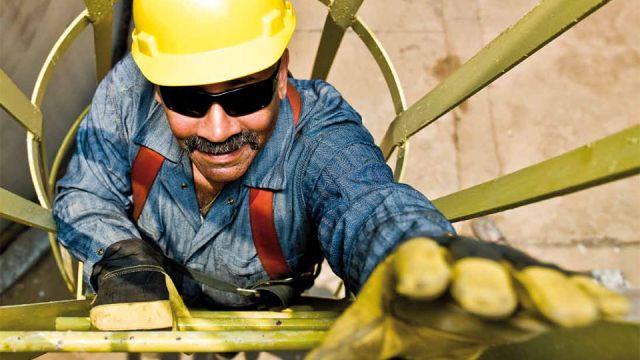Safety training impacts the bottom line
Training can increase productivity
Studies have shown that career and technical education aids in the process of having a quality and productive workforce. Providing young craft professionals with hands-on learning before they begin their careers supports a stronger, more efficient workforce capable of improving company and personal productivity. Not everyone has the ability or desire to go to college, and all individuals deserve opportunities to learn skills that will allow them to succeed in the workplace. Formal education programs, such as career and technical education classes, enable students to more efficiently begin a career upon graduation.
In the past, many craft professionals had to learn their craft through trial and error and did not always learn the necessary safety practices that go along with it. A popular held belief at the time was that integrating safety training meant having a negative impact on production. However, the theory that safety training countered productivity collapsed due to research showing its cost savings. The overall performance and profitability of a company can be improved by implementing training for safe work practices without taking craft professionals away from their productive tasks.
Production-focused management promotes potential savings in insurance premiums through lower loss ratios and a lower Experience Modification Rate (EMR). Sustained and consistent communication between safety support and production management creates a measurable, positive relationship. Numerous studies have demonstrated that developing a safety culture noticeably promotes employee responsibility. Research also shows that employee safety training measurably improves morale and productivity and leads to fewer issues with regulatory agencies like OSHA. Companies that choose to ignore the comprehensive studies supporting safety training are losing money. Without training, companies can experience decreased production and increased litigation. There are several modalities of safety training that can be implemented in a company’s workforce.
- Consultants, third-party training organizations and insurance providers offer curricula and can schedule training sessions on or off site.
- In-house trainers can conduct training sessions, as well as develop their own curriculum or use an established methodology.
- Agencies such as The Associated General Contractors of America and Associated Builders and Contractors offer training, generally in a central location away from the project site.
- NCCER offers safety curricula, which can be taught worldwide by contractors, associations, construction users and secondary and postsecondary schools.
Supervisors should be included in the training process to ensure that everyone is hearing and supporting a consistent message. Having the wisdom gained through experience certainly adds to the credibility and effectiveness of the supervisor.
For many years, companies and organizations have documented that training has improved their bottom line. The value of both craft skills and safety training must be maintained on a consistent and sustained level to support a company’s return on investment, marketability and safety culture. Ultimately, safety training increases the overall value of the company and industry.
About the Author
David Roberson is the Building Division Safety Manager for Zachry Construction Corporation. He has more than 24 years of safety experience in heavy highway, civil, building, process, maintenance and power plant construction. He is an active member of NCCER’s Safety Committee, WSO Board of Directors and WSO Certification Board. He also has safety certifications with ISHM as a Certified Safety & Health Manager and WSO as a Certified Safety Manager.
This article was originally published in the Fall/Winter 2014 edition of NCCER’s The Cornerstone magazine (http://www.nccercornerstone.org/publications/publications-archive). This content has been republished with the permission of NCCER and the publisher.



















